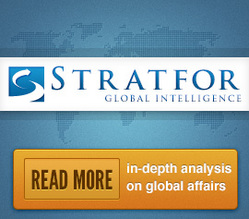The media is preoccupied with democracy, human rights and other values-driven elements that reflect the discourse of foreign policy among elites and that often have little to do with the actual motivations of governments behind closed doors. So what is really going on in the world, what really motivates governments? In fact, the globe is a venue for struggles over geographic spheres of influence to the same extent it has been in former ages. Once that reality is accepted, relatively little that happens in the world is surprising.
Take the Middle East. The United States has a security problem in the Middle East because the so-called Arab Spring, rather than lead to democracy, has led to anarchy. The anarchy unleashed has provided opportunities for disease germs such as al Qaeda. Otherwise, the United States is engaged in a balance-of-power struggle with Iran for geographic influence in the Levant. The Iranian leadership uses the language of Islam, even as it also thinks like the pagan Persians of antiquity, in terms of a desired sphere of influence stretching from the Mediterranean to the Central Asian plateau. But as long as the sea lines of communication remain secure and transnational terrorists are containable and kept away from America's or Israel's borders, for example, whether places like Egypt or Libya or Yemen struggle for years on end with enfeebled governments matters only modestly to Washington and is, in any case, something Washington cannot do that much about.
While the media is preoccupied with Middle Eastern chaos, the more significant geopolitical changes occurring in the globe involve the sphere of influence Russia is trying to carve out from the Baltics to the Caucasus, including Central and Eastern Europe, and the one China is trying to carve out in the Western Pacific and Indian oceans as far away as Africa.
Europe's sustained economic crisis and Russia's surfeit of cash from energy revenues has created an opportunity for the Kremlin to establish pipelines and buy up infrastructure, as well as employ other forms of financial pressure, in order to gain political leverage with regimes as far-flung as Hungary, Bulgaria and Azerbaijan, not to mention quite a few others. The Warsaw Pact and the Soviet Union are not re-emerging, but a more traditional, soft sphere of influence based on historical Russian geography and empire building is. The media is, by and large, absent regarding this story. The media condemns Russian President Vladimir Putin as a human rights violator who did not return an American defector. But just how often in history has Russia had a sympathetic ruler? Far more important, Putin has what, in terms of Russia's history, is a legitimate geographical vision that he is trying to implement. Hungary's drift to quasi-authoritarianism under Prime Minister Viktor Orban as a possible means to accommodate Putin, and Azerbaijani President Ilham Aliyev's balancing act between Russia, Iran, Turkey and the United States -- in which he has lately shifted back somewhat toward Russia -- constitutes a register of global geopolitics more telling than any individual development recently in the Arab world.
China, even as its rate of economic growth slows, is continuing to both enlarge and modernize its navy while expanding its commercial interests around the southern navigable rimland of Eurasia. China has been putting money or displaying interest in deep-water port projects in Kenya, Tanzania and Bangladesh, following its hands-on construction and financing of other Indian Ocean ports in Myanmar, Sri Lanka and Pakistan. In addition, China has established a resource-extraction empire throughout sub-Saharan Africa to link up with these budding, western Indian Ocean ports. The Venetian, Dutch and British maritime commercial empires all had their beginnings in less demonstrable form. At the same time, China is trying to develop a full-spectrum naval presence in East Asian waters -- from nuclear submarines to small fishing boats with potential for intelligence gathering. James Holmes, Toshi Yoshihara, Andrew Erickson and many other scholars at the U.S. Naval War College and other places have been meticulously chronicling these developments. China's maritime forces, both warships and other sea platforms, are designed to do what has been a traditional role of world navies throughout modern history: affect perceptions of power by meshing maritime movements with diplomatic, political and economic activity. (For it is in the creative combination of both hard and soft power that true strategy emerges.) If China calibrates its naval expansion well, it will never have a shooting war with the United States -- or with anybody else for that matter -- even as the perception of its influence expands over two oceans.
Russian and Chinese expansion, as Stratfor has reminded readers, may be unsustainable over the long term. Russia faces demographic challenges, even as it may not dominate the energy market to the degree that it has, owing to hydrocarbon discoveries elsewhere. China's economic slowdown may very well in the future reduce its ability to keep strengthening its military -- at least at the level that it has for decades. Russia and China both face structural problems in their economies and political arrangements that do not augur well for the future. But for the moment, while the American elite fixates on Middle Eastern anarchy about which it can do little, the two Eurasian behemoths are attempting to push out their zones of geographic influence.




